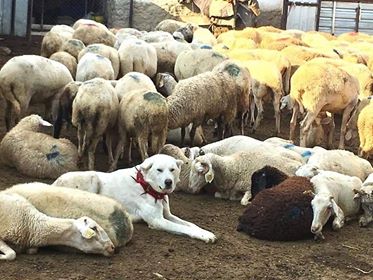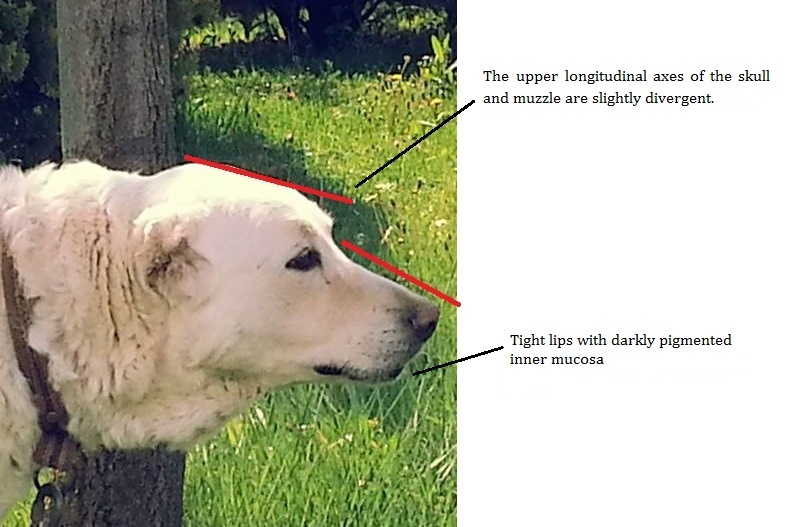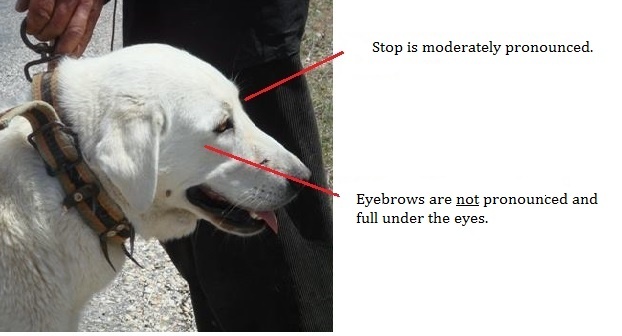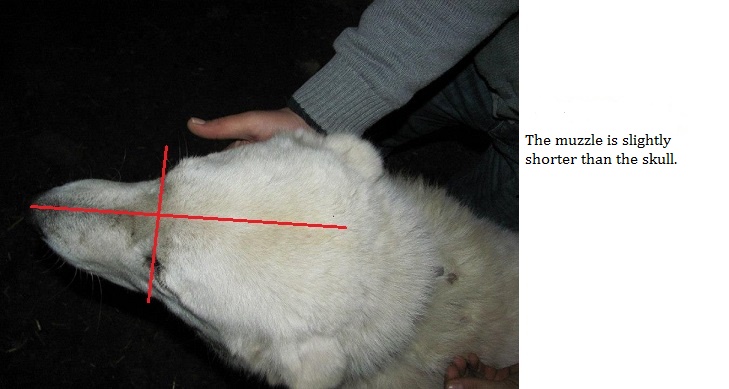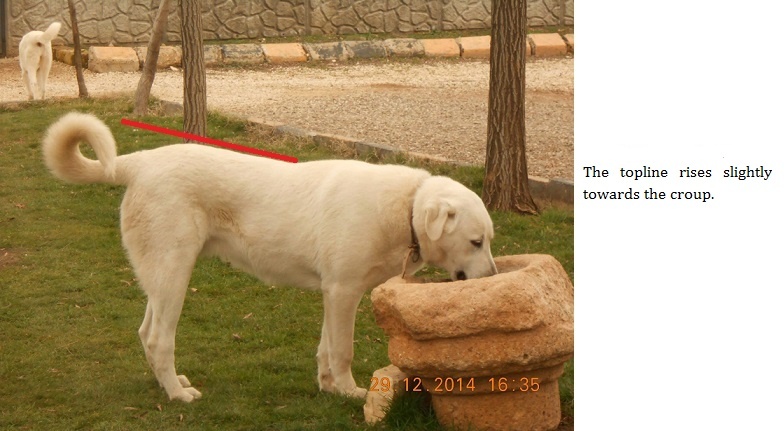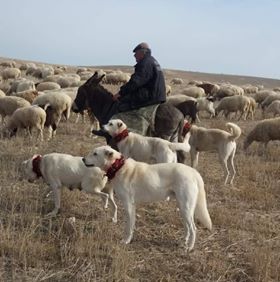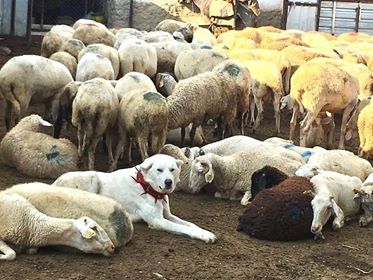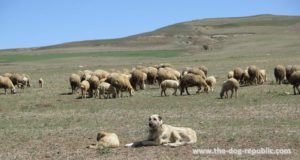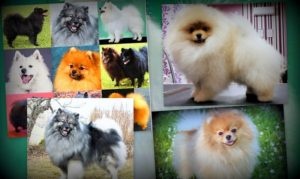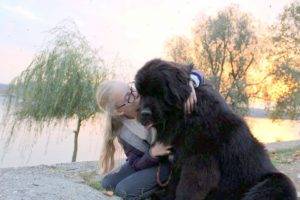Wary of strangers whilst tolerant and affectionate towards the people and livestock the breed is to protect. When the owners are present or the dog is
out of his territory, the Akbaş Dog is calm. Unprovoked aggression to humans is not accepted. The dog may look aloof as protecting a flock requires independent thinking. The breeding principles must be based not onlyon the physical characteristics, but alsoon the dog’s commitment to the flock and eagerness to protect it.
THE DOG REPUBLIC / TRANSLATION: Mr Ilker Ünlü. Revised by Ms Orysia Dawdiyak/Photo by:Again Rasim
TURKISH SHEPHERD DOG
AKKUS (AKBASH)(Breed name in the country of origin)
TRANSLATION: Mr Ilker Ünlü. Revised by Ms Orysia Dawdiyak.
ORIGIN: Turkey
DATE OF PUBLICATION OF THE OFFICIAL VALID STANDARD:
UTILISATION: Livestock and estate protection dog
CLASSIFICATION
FCI breeds nomenclature:
Group 2 Pinscherand Schnauzers – Molossoid breeds –
Swiss Mountain and Cattle Dogs
Section 2.2 Mountain Type.
Without working trial.
BRIEF HISTORY:
Even though the origin of the Akkuş (Akbaş) Dog seems to be lost in history, it suffices to say that the breed forms the Turkish link in the white livestock protection dogs’ tradition common in Southern and Eastern Europe. It may even be the beginning point of the tradition for white dogs with white sheep in the east. In the Turkish historical accounts, Evliya Celebi, the well known Turkish traveller of the17th century, mentions dogs known as “Angora Goat Dogs” whose bravery and commitment to their shepherds are greatly praised. The Travel Book of Evliya Celebi may be theoldest historical record that mentions the Akkuş (Akbas) Dog in this geographical location and associated with predominantly white goats.In his book dated 1910, Colonel A.F. Townsend, the British military counsel in Turkey from 1903 to 1906, describes these white dogs in Western Turkey as looking somewhat like a Collie, but strong and brave enough to pull down a rider off his horse. The breed was described by David Nelson of the US State department, and his wife Judy
Nelson in the late 1970s around Eskişehir, Turkey. Although traditional name was Akkuş (whitebird) They promoted these dogs as Akbaş Dogs after taking the first specimens back to the United States in the early 1980s. The popularity in the breed’s homeland, Turkey began only in the mid 1990s.
IMPORTANT PROPORTIONS:
• Length of the skull is slightly longer than its width
• The muzzle is slightly shorter than the skull
• The upper longitudinal axes of the skull and muzzle are slightly divergent
• Length of the body is slightly longer than the height at the withers
• Depth of the chest is half of the height at the withers or slightly shorter
• The topline rises slightly towards the croup
GENERAL APPEARANCE:
The body is almost square. The sound and robust body enables the dog to work in difficult terrain for long periods of time. The coat is not as long as the breed’s European cousins.
TEMPERAMENT:
Wary of strangers whilst tolerant and affectionate towards the people and livestock the breed is to protect. When the owners are present or the dog is out of his territory, the Akbaş Dog is calm. Unprovoked aggression to humans is not accepted. The dog may look aloof as protecting a flock requires independent thinking.
The breeding principles must be based not onlyon the physical characteristics, but alsoon the dog’s commitment to the flock and eagerness to protect it.
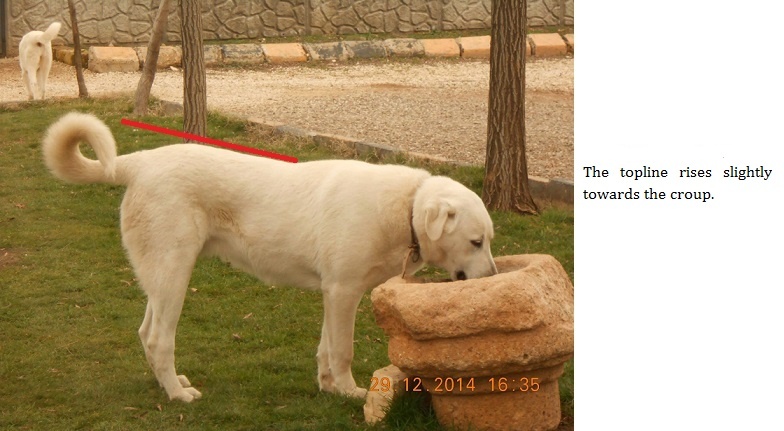
HEAD:
Skull:The length of the head is nearly 40 % of the height at the withers. Length of the skull is slightly longer than its width. It is proportional to the body. The roundish head tapers gracefully toward the muzzle. Top of the skull has a slight dome, but it must not be distinctly round. Occiput is not distinct. Eyebrows are moderately pronounced.
Stop: Moderately pronounced.
CRANIAL REGION:
Muzzle:The muzzle is 40-44 % of the length of the head, making it slightly shorter than the skull, yet still strong. It tapers gracefully toward the nose creating a wedge-shaped head. Full under the eyes. The upper line of the muzzle is slightly convex.
Nose: Well-developednostrils with dark pigmentation inside. Black is the preferred colour, but brown is also acceptable. Pigmentation on the nose may fade in winter.Nose must not be above or below the muzzle line.
Lips: Moderately thick and tight. Flews just cover the lower jaw. They must not be pendulous and the corner of the mouth must be closed to avoid saliva flowing out. Lips and inner mucosa are always darkly pigmented.
Jaws/Teeth:Scissor bite is preferred,yet pincher bite is also acceptable. Teeth are strong and well-embedded in the jaws. Missing P1 and M3 are not to be penalised.
Eyes: Almond-shaped and dark as possible. They must not be round. Well-apart and set slightly obliquely, not located toward the front of the head. Dark eyerims should be tight.
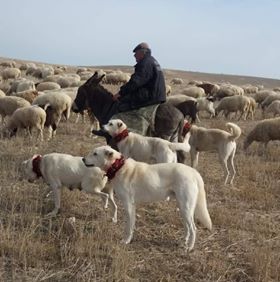
Ears: Located above the eye level. If not cropped, they must be pendulousandtriangular with rounded tips. Where they fold must not be above the top of the skull. They lay flat against the head. Ears are 40-45% of the head length.
NECK:Of moderate length and powerful, covered with a thick coat. Males may have very little dewlap. The angle at which the neck connects to the body must not greater than 30˚.
BODY:
General Appearance:Powerful, sound and well-balanced, not bulky or feeble. The body is almost square. Depth of the chest is half of the height at the withers or slightly shorter. The topline rises slightly towards the croup.
Shoulders: Powerful and slightly pronounced.
Back:Tightly muscular. Not long. Firmduring movement.
Loin: Firmly connected to the back. Short. Slightly longer in bitches. The top side is slightly convex.
Croup: 1/3 of the height at the withers with 25-35˚ in profile.
Chest:Moderately wide and slightly convex, but never cylindrical. Thedepth is half of the height at the withers or slightly shorter.
Underline: Right after the ribcage, it rises gradually towards the belly. It is tucked-up but not like a sighthound.
TAIL: Moderately set tail forms a continuous line with the topline. Powerful at the base tapering gradually towards the tip. Carried low in repose with a hook at the tippreferred. It reaches at least as far as the point of the hocks.When the dog is alert, the tail is raised over the back in a circle. The circle must not fall on the side of the loin.
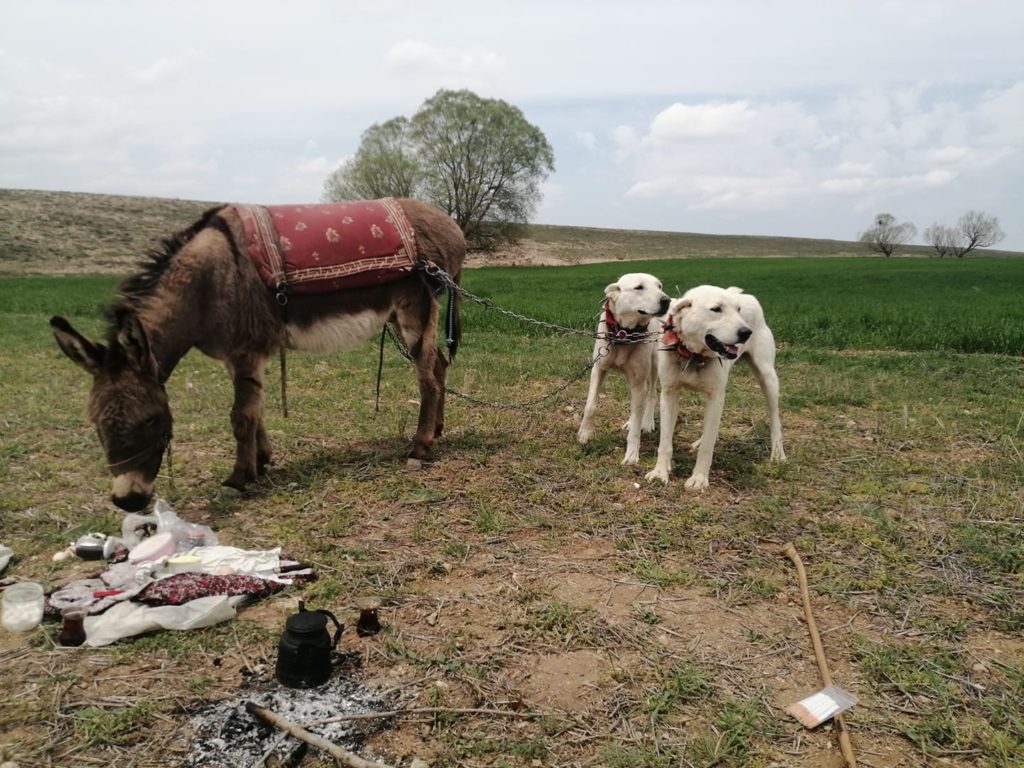
LIMBS:
FOREQUARTERS:
General Appearenace: Parallel and muscular.
Shoulders:Powerful and moderately long. Forman angle of between 90˚ and 110˚.Strongly attached to the body.
Upper Arms:Well-muscled and almost as long as scapula.
Lower Arms: Strong and straight. Elbows form an angle of between 110˚ and 135˚.They are not to point in or out. Pasterns: Vertically form an angle of between 20˚ and 30˚. Seen from the front, straight and parallel.
Forefeet: Roundish with powerful toes. Toenails are dark. Pawpads are elastic and strong. Darkly pigmented.
HIND ASSEMBLY:
General Appearance: Strong and parallel. Flexible in motion.
Thighs: Well-muscled and parallel. The length is about 30 % of the height at the withers.
Knees:The knee angle is between 110˚ and 130˚.
Lower Thighs: Well-muscled and parallel. The length is about 33 % of the height at the withers.
Hocks: Strong hocks are parallel, and vertical to the ground. Height of the hocks are 25- 35 % of the height at the withers. Form an angle of between 120˚ and 155˚.
Rear Pasterns: Powerful, but flexible. The height of the pasterns is in harmony with the height of the hocks.
Rear feet: Face forward and parallel to each other. Slightly longer than the forefeet.Toenails are dark. Dewclaws are acceptable.
MOVEMENT: The Akbaş Dog walks calmly with the flock and prefers a trot of medium stride. Legs must cover maximum area with minimum energy. The head is carried either at the topline level or slightly above it. The topline must be firm during movement.
Hindquarters must have a strong drive. Dogs that do not walk with ease and flexibility lose points regardless of how handsome they look.
SKIN:Tight to the body.Males mayhave a little dewlap. Skin must be completely or partially darkly pigmented. The visible skin on the nose, eyerims and lips must be either black or dark brown. The darker the better.
COAT: The body is covered with a straight double coat of between 4 to 7 cm. The coat is not as long as the breed’s European cousins. The underbelly is not covered with long hair.Short hairon the head and ears. The tail may have longer hair
COLOUR: Completely white. Biscuit and ivory on the ears or down the spine acceptable as long as they are not in patches.
HEIGHT AND WEIGHT:
Height: 67- 72 cm for males; 65-70 cm for bitches. Extreme sizes atypical for the breed type are detrimental for the breed’s working capacity and must be avoided.Weight:Proportional to an athletic dog’s height.
FAULTS:Any departure from the foregoing points should be considered a fault and the seriousness with which the fault should beregardedis in exact proportion to the degree and effect upon the health and welfare of the dog.
SERIOUS FAULTS:
• Head and expression atypical for the breed
• Cumbersome or feeble dogs
• Round or protruding eyes and those that are not set obliquely
• Erect or not completely folded ears
• Profuse or very short coat
• Yellow eyes
• Cow hocks
• Wavy coat
DISQUALIFYINGFAULTS :
• Aggressive or overly shy dogs
• Obvious behavioural or physical anomalies.
• Missing or incomplete teeth (Except for M3, third molars and PM1 for premolars)
• Monorchidism or cryptorchidism
• Lack of undercoat
• Docked tail
• Height below the minimum
• Under or overshotjaws
• Albinism (Lack of pigmentation).
• Blue or odd eyes
• Coloured patches on the coat
N.B.:
• Male animals should have two apparently normal testicles fully descended into the
scrotum.
• Only functionally and clinically healthy dogs, with breed’s typical conformation,
should be used for breeding.
THE DOG REPUBLIC (6.5.2020.)

